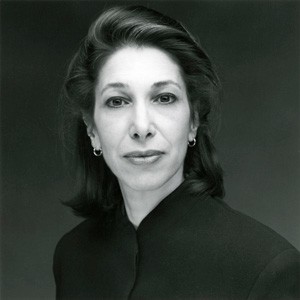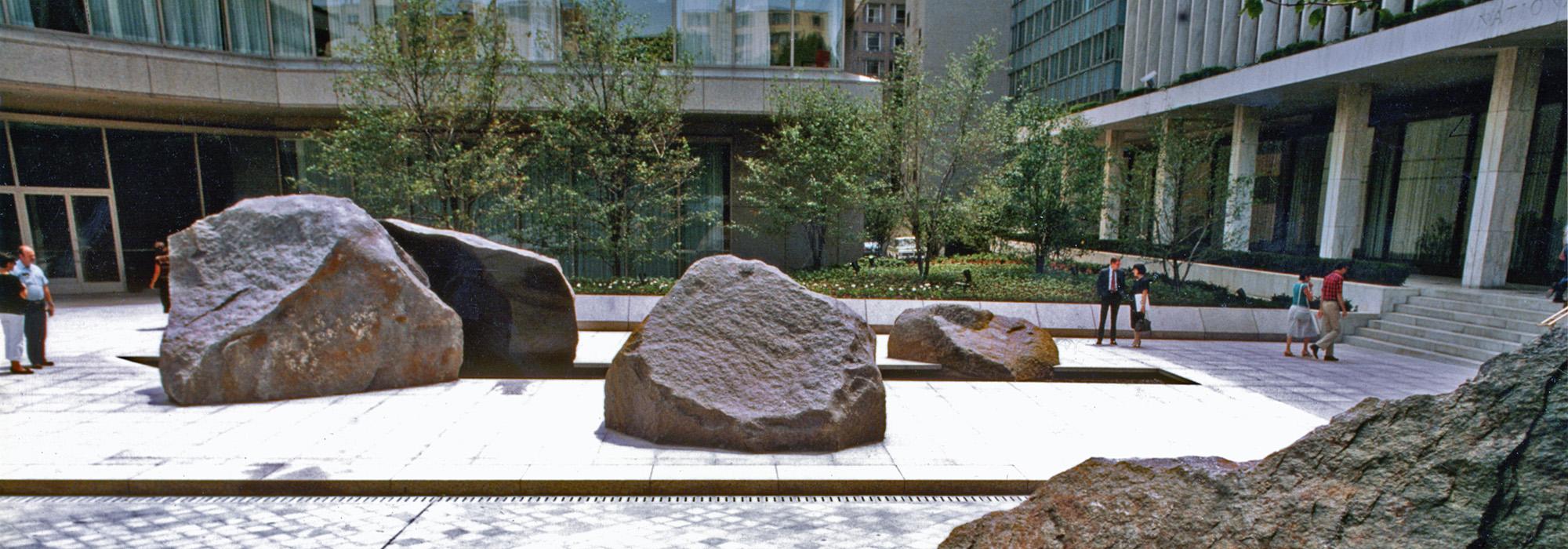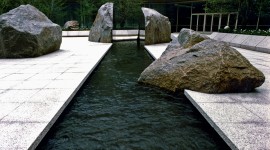Elyn Zimmerman Speaks Out About MARABAR, which she calls the "Seminal Work" in her Career

On February 9, 2021, Elyn ZImmerman, the New York-based artist who created MARABAR, the site-specific installation at the corporate headquarters of the National Geographic Society (NGS) in Washington, D.C., sent the following letter to the Washington, D.C. Historic Preservation Review Board. The artist considers this installation the "seminal work" of her career.
On February 25, 2021, the Board is scheduled to review a proposal from NGS to relocate a portion of MARABAR to a public park near the Navy Yards in southeast D.C. Ms. Zimmerman is calling for NGS to first discuss with her how and whether MARABAR could be retained as part of the proposed renovations of its campus, something NGS has never done. They have only contacted Ms. Zimmerman to say that MARABAR must go. For the artist, this is not collaborating, it's dictating.
February 9, 2021
I am the artist who was commissioned by the National Geographic Society in 1981 to create an artwork composed of rock and water for the newly designed plaza connecting the older Edward Durrell Stone building with their new Skidmore Owings and Merrill building on the NGS campus. It seemed to me colossal good fortune to be selected for this project considering that I was a young woman artist with very limited experience in public art. The even better fortune was to have the expertise and support of the chief architect of the building project, David Childs, to accomplish the uniquely difficult tasks involved in fabricating, transporting and installing MARABAR.
Please know that I consider MARABAR the seminal work of my career, and that despite the popularity and wide exposure MARABAR has had over the past 40 years I have never reprised it in any of my other commissions. Because of the recognized importance of MARABAR, it is especially disappointing that until NGS and its architects had already reached their conclusions to destroy or move it from its current location on the NGS plaza, they made no effort to reach out to me to discuss how MARABAR might be preserved. I believe that solutions that preserve MARABAR while meeting NGS’s needs can be found if the NGS team and I work together.
That MARABAR is very much a site-specific sculpture is a key reason why the focus should be on how to retain MARABAR on the plaza at the NGS campus, and how best to incorporate it into the programmatic planning for the new entry pavilion.
The other key reason to keep MARABAR on the National Geographic campus is that attempting to move the large rock components of MARABAR could physically destroy them. These large pieces are unique and cannot be replaced. All surfaces of the rocks, rough and polished, were hand worked. The core of MARABAR is composed of 5 rough and polished very large, irregular granite rocks positioned around a 60’ long x 10’ wide pool of water. The 3 largest rocks are ‘spliced‘ into the east end of the pool closest to the new SOM building. Together they weigh over 500,000 pounds. The polished faces of the 3 largest rocks are relatively thin where they extend into the water down to the pool bottom. It would require a great expertise to move these rocks without snapping the thinner, polished extensions or scarring the hand finished ‘natural’ portions of the stones. There are 7 additional boulders placed in the landscape around the SOM building that create a processional arrival to the plaza and relate the landscape to the plaza sculpture this creating a more inclusive environmental artwork.
It’s disappointing that there is no evidence NGS and the architects working for them on the plaza renovation ever considered accomplishing their programmatic goals while taking the presence of MARABAR as a given. Even after they were asked by HPRB to “strongly consider whether the sculpture can remain” during your review May 28, 2020, all of the analyses they generated to date dictated that MARABAR must be moved from its current location.
It’s also disappointing that they never reached out to me – until a phone meeting the day after NGS had signed an MOU for the transfer of MARABAR to Canal Park.
I would still welcome a genuine invitation to work with Hickok Cole and their landscape architects to resolve the problems of fulfilling the programmatic requirements for the new pavilion while retaining MARABAR on site. I have a long career of working productively with design professionals on projects around the world. These collaborative experiences and my tenure as a Commissioner on the U.S. Commission of Fine Arts (2003-2008) taught me that cooperation, respect, and consideration of different viewpoints usually results in more successful and creative projects.
However, if it proves impossible to retain MARABAR in its current location while reasonably meeting NGS’s programmatic needs – and I have not seen any such proof – consideration should be given to searching for another site for the components of MARABAR. In that case I would accept NGS’s prior offer to move MARABAR to a site of my choice at NGS expense. A museum, sculpture garden or a university site in the Washington area would be my choice for relocating the components of what was MARABAR.
The shapes, weights and scale of the rocks make them difficult to work with so I request to be consulted on all aspects of their handling, including approval of the structural and hydraulic engineers who will make the plans for the removal, transport and reinstallation, and the selection of the contractors who will do the actual work.
Again, let me say that I hope that the HPRB will agree that all options for retaining MARABAR on the NGS campus have not been exhausted and that you might suggest a collaborative investigation for new solutions with me participating on the design team that might result in a ‘win-win’ solution.
In closing let me reiterate my appreciation to the HPRB for all its considerations.
Thank you for your time in reviewing this letter.
Sincerely,
Elyn Zimmerman






